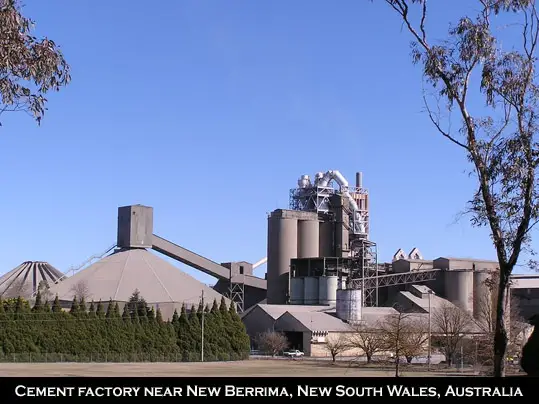Cement CO2 Emissions: Cement manufacture causes environmental impacts at all stages of the process. These include emissions of airborne pollution in the form of dust, greenhouse gases, noise and vibration when operating machinery and during blasting in quarries, and damage to countryside from quarrying. Equipment to reduce dust emissions during quarrying and manufacture of cement is widely used, and equipment to trap and separate exhaust gases are coming into increased use. Environmental protection also includes the re-integration of quarries into the countryside after they have been closed down by returning them to nature or re-cultivating them.
Due to the large quantities of fuel used during manufacture and the release of carbon dioxide from the raw materials, cement production also generates more carbon emissions than any other industrial process. Cement clinker production contributes about 4% of global total CO2 emissions from fuel use and industrial activities. cement CO2 emissions

Facts from the International Energy Agency 2007
• The non-metallic mineral sub-sector accounts for about 9% of global industrial energy use, of which 70 to 80% is used in cement production.
• The average primary energy intensity for cement production ranges from 3.4 to 5.3 gigajoules per tonne (GJ/t) across countries with a weighted average of 4.4 GJ/t. Averages at a country level have improved everywhere, with the weighted average primary energy intensity declining from 4.8 GJ/t in 1994 to 4.4 GJ/t in 2003. Much of this decline has been driven by improvements in China, which produces about 47% of the world’s cement.
• The efficiency of cement production is relatively low in countries with old capital stock based on wet kilns and in countries with a significant share of small-scale vertical kilns.
• In primary energy terms, the savings potential ranges from 2.5 to 3 EJ per year, which equals 28 to 33% of total energy use in this industry sector.
• Cement production is an important source of CO2 emissions, accounting for 1.8 Gt CO2 in 2005. Half of cement process CO2 emissions are due to the chemical reaction in cement clinker production. These process emissions are not affected by energy efficiency measures. Yet it might be possible to reduce clinker production by 300 Mt with more extensive use of clinker substitutes which could reduce CO2 emissions by about 240 Mt CO2 per year. Therefore the CO2 reduction potential could be higher than the energy saving potential.
• The average CO2 intensity ranges from 0.65 to 0.92 tonne of CO2 per tonne of cement across countries with a weighted average 0.83 t CO2 /t. The global average CO2 intensity in cement production declined by 1% per year between 1994 and 2003. cement CO2 emissions
Material is sourced from the International Energy Agency 2007, Tracking Industrial Energy Efficiency and CO2 Emissions.
